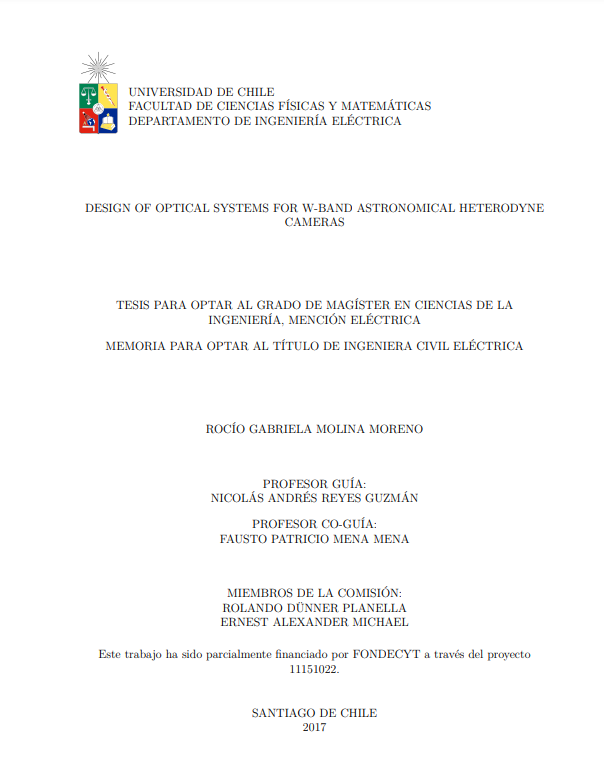Design of optical systems for W-Band astronomical heterodyne cameras
Licencia: Creative Commons (by-nc-nd)
Autor(es): Molina, Rocío
The new generation of telescopes that will be installed in the world and particularly in Chile is focused on the search of high-impact scientific objectives. For this, the technology used must be cutting edge, in order to achieve a better performance than currently achieved. This challenge falls into the hands of engineering and this thesis is developed in that context. The general objective is to develop intermediate optical systems to allow the existence of heterodyne cameras in the range of 85 - 115 GHz (extended W band). For this, two sub-projects are developed. In the first one, we work with the original design of the 1.2-m SMWT telescope that is currently in the National Astronomical Observatory in Cerro Calán. We study the feasibility of having a heterodyne camera without the need to add extra optical elements. For the second project, the parameters of the 12-m ALMA antenna are used. An intermediate optical system consisting of a Gaussian Beam Telescope is designed. We seek to adapt the optics of the antenna with a heterodyne receiver of 7 pixels. This design is applicable to a future ALMA upgrade or to the LLAMA project, which is under development. In both projects, we work with mathematical models developed in Matlab and based on the quasi-optical model. Subsequently, fine-tuning the models is performed with simulation software. Performance parameters such as aperture efficiency, noise temperature, beam truncation, cross-polar component and surface accuracy are taken into account for the design. We find an appropriate beam position and waist for the SMWT 7-pixel heterodyne receiver. The normalized efficiency of the lateral beams is 92.9% with respect to the central beam. A 23.6-mm spacing between beams with a 6.8-mm waist in the Cassegrain focal plane is required. No additional optics are necessary. For the design in a 12-m antenna, a 58.6-mm spacing is obtained in the Cassegrain focal plane, a beam waist of 16.8 mm and a normalized efficiency of 96.9% for the central frequency (100 GHz). The design for both, ALMA and LLAMA, consists of a Gaussian Beam Telescope using two ellipsoidal mirrors and compacted by the use of flat mirrors. The magnification in each case is different due to the space constraints particular to each. This implies that the waist of the beam in the vacuum window is different.
[Santiago: 2017]
Compartir:
Una vez que el usuario haya visto al menos un documento, este fragmento será visible.


